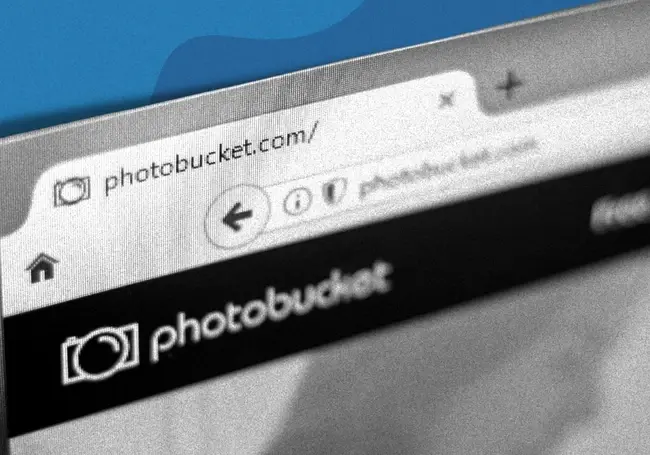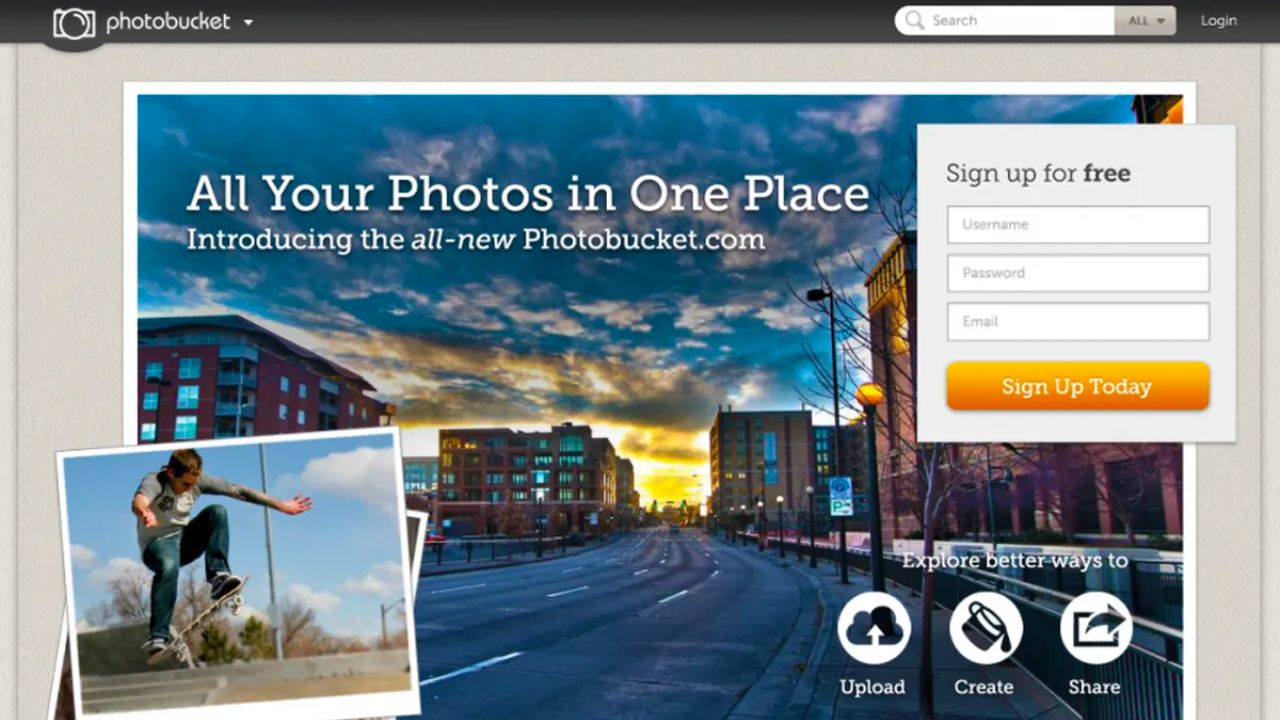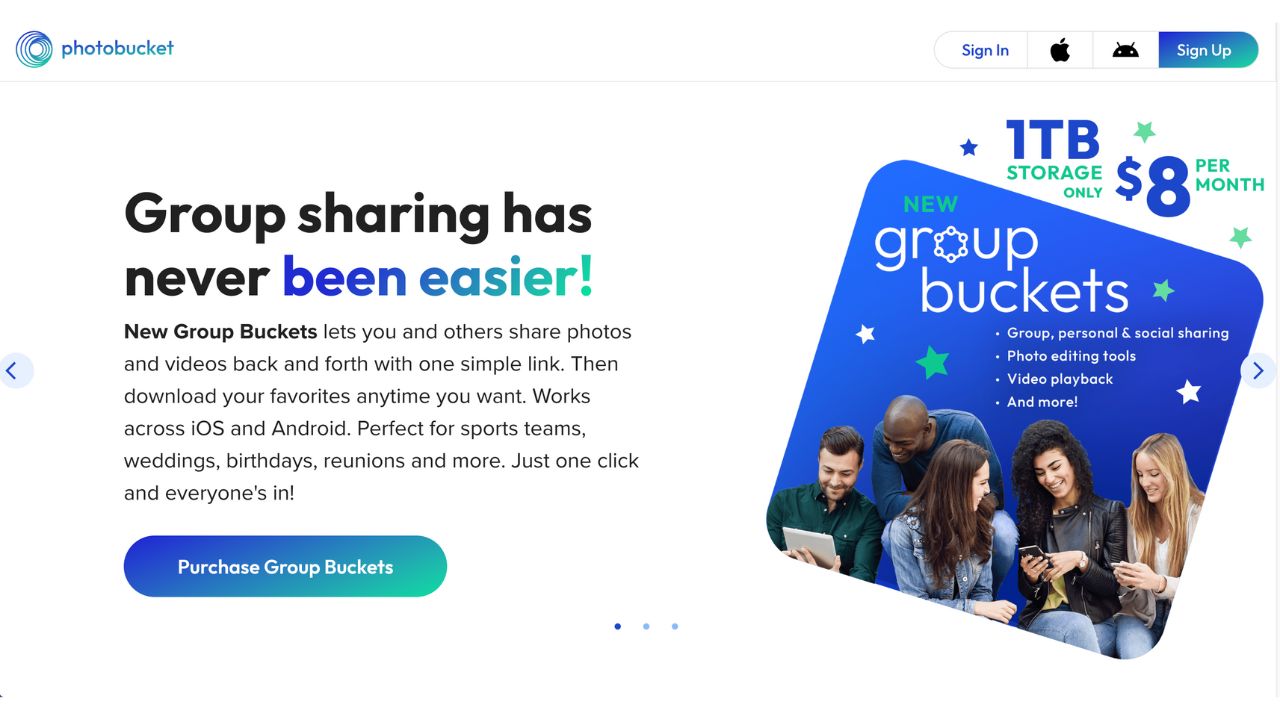
If you were on the internet in the late 2000s or early 2010s, you were probably a member of Photobucket. The image-hosting website was an incredibly popular choice for users looking to store and share photos online, and at one point boasted 100 million registered users in its prime.
But ask anyone today where they store their photos today, and very few mention Photobucket or even know what it is. So what went wrong for this once-leading photo storage platform?
This article explores what happened to Photobucket and whether the platform is still active today, delving deep into the website’s rise and ultimate downfall in the cloud storage space.
The rise of Photobucket
Photobucket was founded in 2003 by Alex Welch and Darren Crystal – two friends who saw a need for a simple and reliable way to share photos online. They received funding from Trinity Ventures and launched the website that same year, offering users a free platform to share and host images.
Photobucket quickly gained popularity thanks to its generous free storage space and simple, user-friendly interface. Unlike other photo-sharing platforms at the time, the platform didn't require users to download any software or have any technical know-how to store their photos. This might seem like a basic functionality now, but back in the day, this was revolutionary.

Initially, Photobucket targeted amateur photographers and casual internet users who wanted to share their photos with friends and family. But in April 2006, almost three years after its inception, the platform introduced the ability to upload and share videos as well as images – a move which would prove to be pivotal in changing the startup into an industry powerhouse.
Within a month of launching this feature more than one million videos had already been uploaded, and it amassed over 14 million users with just 35 employees.
Photobucket made up for a whopping 2% of all US-based internet traffic at the time and had become the go-to platform for embedding images on blogs, forums, and new social media sites like Twitter.
Images hosted on the platform were also frequently linked to e-businesses, online auctions, and advertisement websites like eBay and Craigslist.
Newscorp Acquires PhotoBucket
Photobucket’s roadmap abruptly changed in April 2007 when Myspace, by far the largest traffic source for the image-hosting platform at the time, began blocking videos that were embedded from the image hosting site into Myspace.
Myspace, which was owned by NewsCorp at the time, accused the platform of violating the terms of their agreement by pushing customers to post ads in the photo slide shows they posted on their Myspace accounts.
Read: What Happened to Myspace? The Fall of the Social Giant
After several weeks of accusations from both sides, NewsCorp finally decided to allow Photobucket videos back on its platform. And the publishing company had patched things up quite nicely with Photobucket, as two weeks later it announced that it agreed with Photobucket to acquire it for $250 million.
NewsCorp pushed for partnerships with other web startups as well as the introduction of Photobucket's very own developer API, which allowed third parties to use Photobucket’s library of images in their applications.
But it also didn’t entirely know what to do with Photobucket as a platform. And with the 2008 financial crisis looming, it was forced to lay off over 100 people from its digital arm, with Photobucket being hit the hardest with 22 layoffs.
The Ontela era
In December 2009, News Corp admitted that it wasn’t equipped to manage Photobucket, and sold the company to Ontela for a total of $60 million. Ontela’s backers, in particular the venture capital firm Steamboat Ventures, committed to funding the newly created entity and financing portions of the deal.
But Despite releasing its own mobile apps and announcing more partnerships with the likes of T-Mobile, layoffs also continue to plague the company. In June, one-third of Photobucket’s staff, around 40 people, were let go.
After months of searching for a new CEO, Tom Munro, Ontela’s Chief Financial Officer, was announced as the company's newest CEO. At the time the platform boasted around 100 million members who uploaded more than four million images each day.

The saved cost as well as the continuous backing of Steamboat Ventures allowed Photobucket to make its first-ever acquisition of the video portal ibeatYou for an undisclosed sum.
But, while Munro publicly announced that he intended to grow Photobucket via acquisitions, this strategy never came to fruition under his leadership. Instead, the platform launched a separate app called Snapbucket in May 2011 to compete against the likes of Instagram.
Then in June 2011, Twitter partnered with Photobucket to power its new photo-sharing feature. This allowed users to upload and attach photos directly to their tweets from Twitter's website and mobile apps.
The partnership with Twitter boosted Photobucket's user base and brand awareness. Although specific details about the duration of the agreement are not publicly available, it's assumed to have lasted for several years, allowing the platform to stay relevant for several more years before its inevitable demise.
What went wrong with Photobucket?
Photobucket's initial success relied heavily on being a free image hosting platform. But this model proved unsustainable as its user base and storage costs soared, and in 2017 it was forced to abruptly change its strategy and restrict image embedding for non-paying accounts.
This broke embedded images across millions of forums, blogs, and online communities, and Photobucket’s user base plummeted as a result. Still, it did not alone lead to Photobucket’s downfall. Around the same time, Other platforms like Imgur and Flickr were emerging, offering better user experiences and monetization models, providing users with alternatives.
And a security vulnerability known as "fusking" – which allowed users to access and download people's private photos, had also become prevalent on the platform, severely damaging people’s trust in Photobucket.
This, paired with other technical issues like frequent outages, sluggish performance and the general decline of forums and blogs where Photobucket thrived, meant less demand for their core service.
Is Photobucket still active today?
Photobucket still exists today, but it’s not nearly as popular as it once was. The platform’s user base has significantly shrunk compared to its peak in the late 2000s, but you can still create an account, upload photos and videos, and share them online.
But Photobucket now heavily relies on paid plans for revenue, and free accounts have limited storage space and features compared to paid plans. You also can’t embed photos on other websites with a free account, which was a core use case for the platform in the past.

Photobucket's decline began in 2017 with a controversial monetization strategy that restricted image embedding for free accounts. This caused widespread frustration and many users migrated to other platforms like Imgur and Flickr.
While Photobucket is still a functional platform, it's no longer the dominant force it once was in the image-hosting world. Its legacy stands as a cautionary tale for online services about the importance of balancing user experience with monetization and adapting to changing trends.












